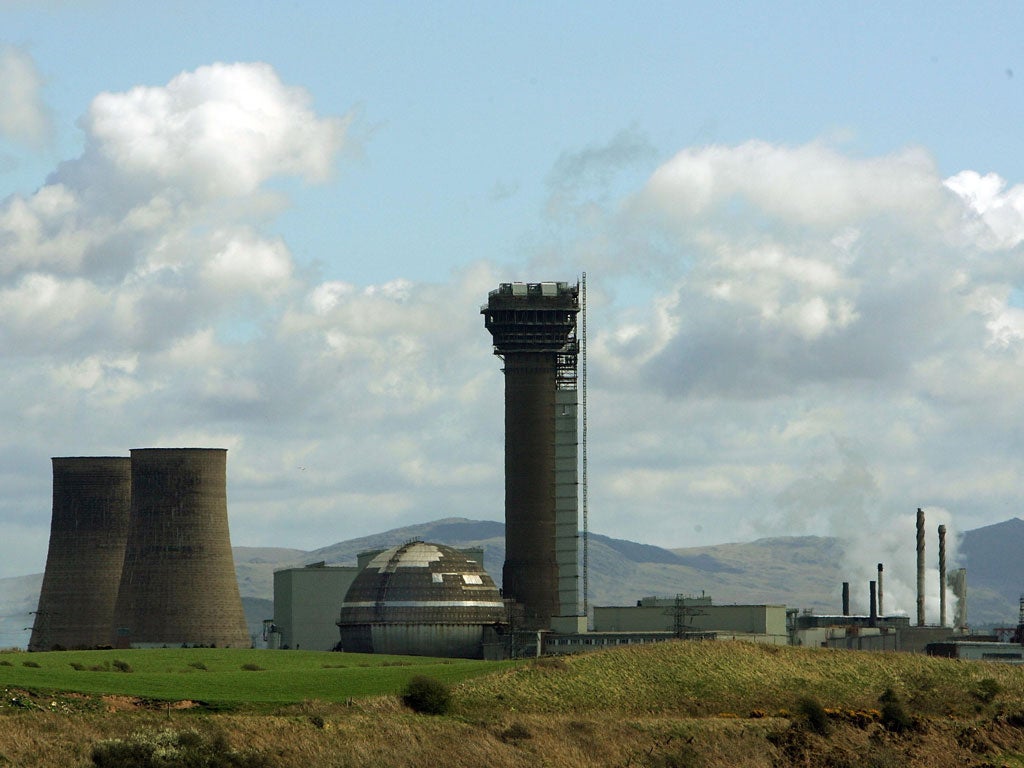Plans to build a nuclear fast reactor at Sellafield come a step closer

A radical plan to deal with Britain’s plutonium waste – the biggest civil deposit in the world – has come a step closer with a legal contract to test the feasibility of building an American nuclear fast reactor on the Sellafield site in Cumbria.
Britain’s own fast-reactor programme was abandoned two decades ago and yesterday it was announced that the fast-reactor site at Dounreay in Scotland will be dismantled by 2025 at a cost of £2.7bn.
However, The Independent can reveal that nuclear officials have signed a feasibility study to investigate the possibility of building an American-designed fast reactor to “burn” the plutonium waste on-site at Sellafield.
The Nuclear Decommissioning Authority (NDA), which has overall responsibility for Sellafield and its 100-tonne plutonium-waste problem, has signed the deal with GE-Hitachi to see whether its Prism fast reactor can directly eliminate the plutonium waste rather than the alternative method of converting it into mixed oxide (Mox) fuel for conventional nuclear reactors.
The deal represents a remarkable U-turn on the part of the NDA which has consistently said that its preferred option to deal with the plutonium waste at Sellafield is to build a second Mox fuel plant at Sellafield – the first Mox fuel plant was closed last year after a catalogue of failures costing £1.34bn.
It is also ironic given that the reason why Britain has such a large amount of civil plutonium waste is because the UK nuclear industry wanted to burn it in fast reactors at Dounreay in Scotland, which had to be abandoned two decades ago, again because of technical failures.
Yesterday, the NDA announced that it would now cost nearly £3bn to decommission the heavily-contaminated site at Dounreay, although it attempted to sweeten the pill by claiming that this was £1bn less than originally planned.
In a statement to The Independent, the NDA said that it had originally ruled out fast reactors as a “credible option” for disposing of the plutonium because the technology was immature and such reactors would not be commercially available for several decades.
“GE Hitachi subsequently approached NDA to suggest their technology was at a more advanced stage of development. Discussions are now ongoing and a contract has been signed between NDA and GE Hitachi for a feasibility study which will be delivered over the next 3-4 months and, after review of the outputs, NDA will consider the credibility, or otherwise, of the proposal,” the NDA said.
“At this stage, evidence has not been provided which changes the NDA position that fast reactors are not credible,” it added.
The GE-Hitachi Prism reactor has come out of the US Department of Energy’s integral fast reactor programme, which was itself abandoned by President Bill Clinton in 1994, just before Britain abandoned its own fast-reactor programme.
However, GE-Hitachi has convinced the NDA that there are grounds for believing that it may be possible to build a pair of fast-reactors at Sellafield that can deal directly with the waste plutonium, rather than the more elaborate method of converting it first into Mox fuel that would then be burned in conventional nuclear reactors.
Daniel Roderick, senior vice president of GE Hitachi, said that if given the go-ahead the company will form a consortium that will build and operate the plant at no up-front cost to the UK taxpayer.
“We will only charge for each kilogram or tonne of plutonium we dispose of. We’re not going to build a several billion pound plant that doesn’t work,” Mr Roderick said.
The Prism fast reactor would be licensed and built within 10 years of given the go-ahead and it could deal with all the plutonium on a “once-through” basis within five years, he said.
A Mox plant would by comparison be subsidised by the UK taxpayer and would take far longer to build and will almost certainly not be built to budget, given the example of the French-built Mox plant in the US which is nearly ten times over budget and many years over schedule, Mr Roderick said.
It is believed that Professor David MacKay, chief scientist at the Department for Energy and Climate Change, has been persuaded of the merits of building a fast-reactor at Sellafield.
“The more people we’ve educated on this, the more support we’re seeing,” Mr Roderick said.
Join our commenting forum
Join thought-provoking conversations, follow other Independent readers and see their replies
Comments
Bookmark popover
Removed from bookmarks